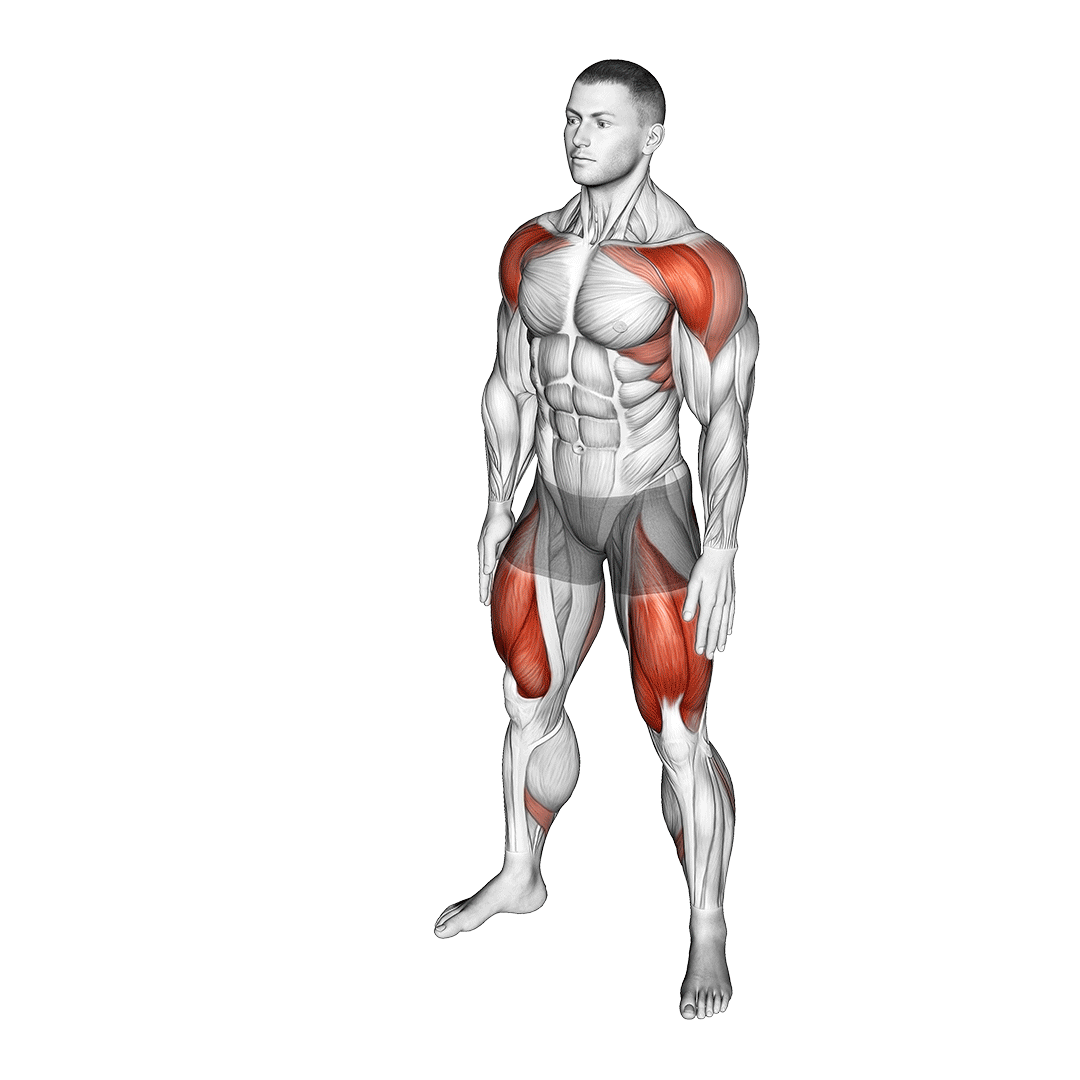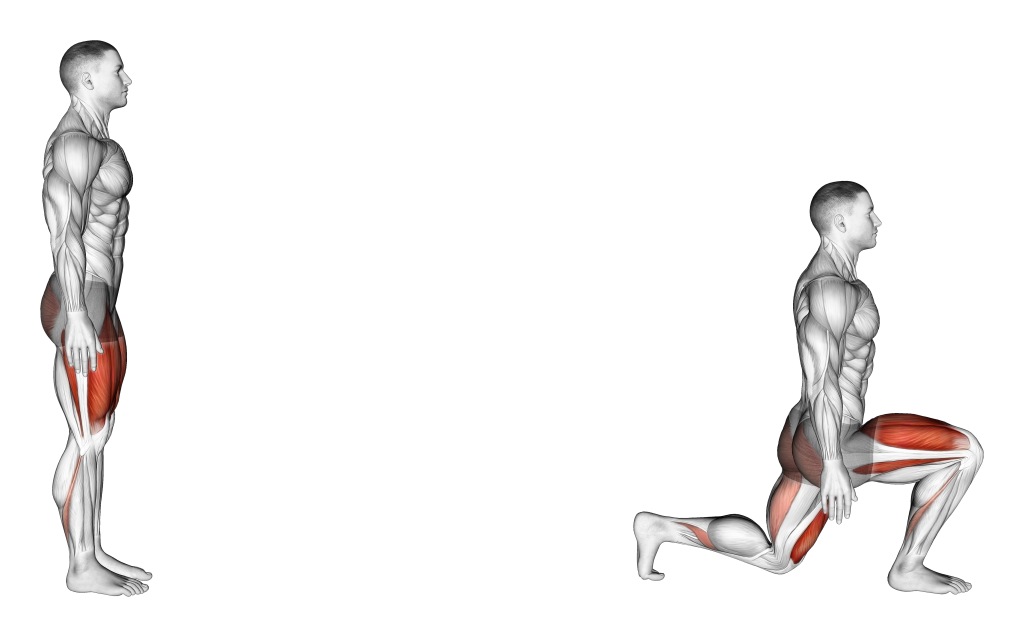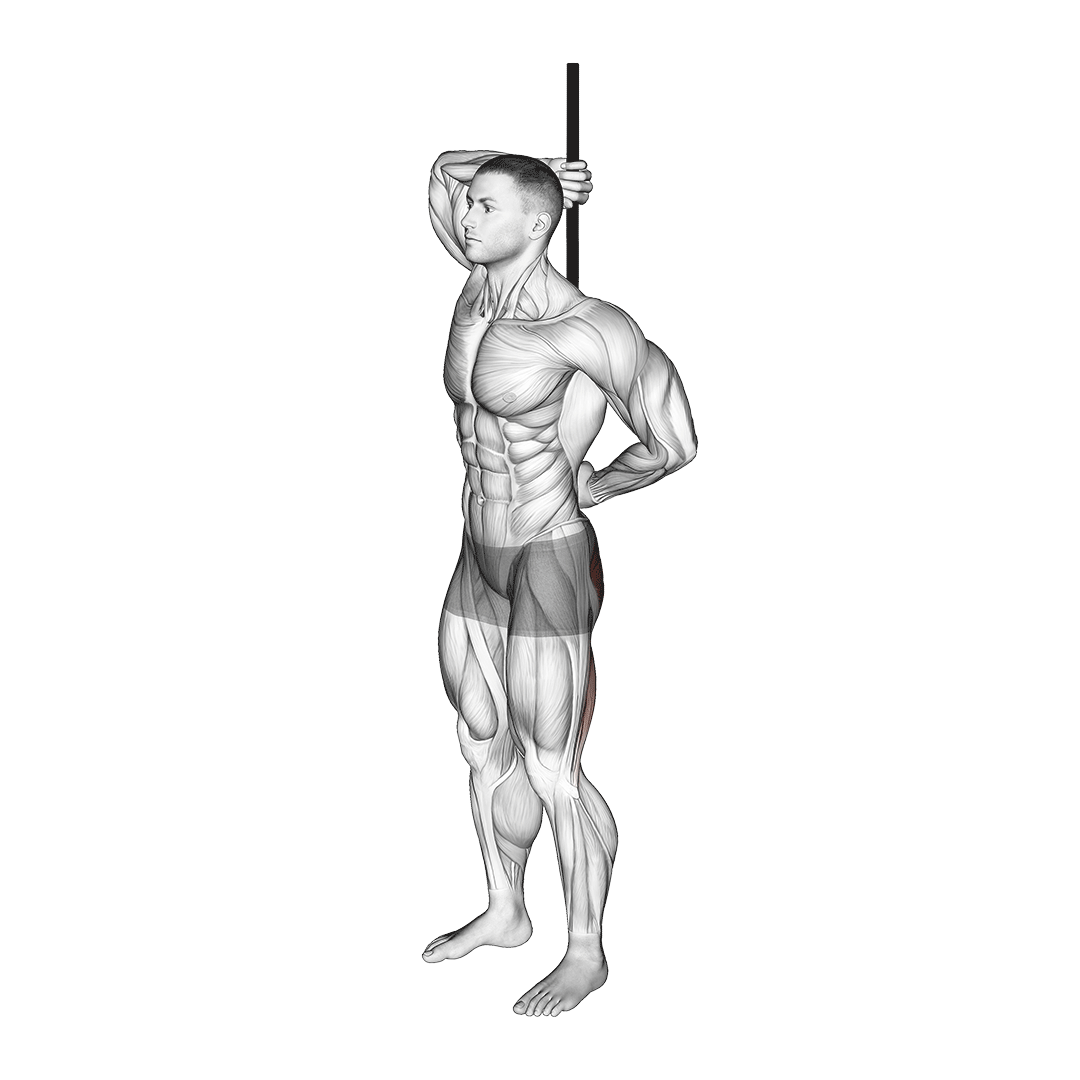Calisthenics Workout Program for Beginners (Week 1 to 6)
Calisthenics is a systematic bodily exercise exhibiting rhythmic fluid movements that activate several muscle groups utilizing the body's weight as resistance with little or no apparatus to provide aerobic conditioning, strength training, greater flexibility, and better muscular coordination.
Basically, calisthenics is a type of compound exercise that only uses a person's body weight as a load for the muscles being worked.
Most calisthenics exercises can be performed without equipment and target several muscle groups through movements such as pulling, pushing, squatting, bending, lunging, jumping, or core rotation.
Organizations such as the Military or a School's sports program utilize calisthenics as a standard tool for physical evaluation to establish a baseline to determine the Recruits'/Students' biophysical conditions and issues. Athletes, bodybuilders, and casual gymgoers also use it as a warm-up and cool-down routine for their workout sessions.
Types of Calisthenics Exercises
All calisthenics exercises can be classified into one or more of the six functional movement patterns:
- Push or
- Pull
- Squat
- Lunge
- Hinge
- Rotation
Push or Pull
Push and pull are two distinct movement patterns of the upper body, but for ease of discussion, we group them here together.
Push movements involve moving things away from the body or moving the body away from a fixed object while pulling does the opposite action. Push and pull movements are further categorized into vertical and horizontal.
Squat
The squat strengthens the hamstrings, glutes, and quadriceps while also enhancing flexibility and posture.
It is an essential functional movement pattern that helps us perform daily activities like sitting, and going down on the floor to kneel, and also provides explosive force in jumping or sprinting.

Lunge
The lunge requires more balance and muscle coordination than the squat, as one leg supports most of the body's weight.
Lunges train both legs to provide equivalent balancing force, as it inhibits the ability of the dominant side to compensate for the weaker leg.

Hinge
The hip-hinge motion helps develop the lower back, glutes, and hamstrings. This hinge action helps us squat and do deadlift-style exercises.

Rotation
This movement is a little different from the others because it uses the core muscles to rotate instead of push or pull.
However, this functional movement is what provides additional momentum in a punch or a kick.
Calisthenics Workout Program for Beginners
A calisthenics workout program for beginners should include a round of exercises that exhibits each of the six functional movements we discussed above.
Exercises below should be done in succession with little to no rest until the last one, then rest for a few minutes before beginning another round.
This workout program is designed to help the individual be able to do full dips and pull-ups by weeks 8 to 12.
Week 1 (1 to 2 rounds, 2 to 3 times a week)
- Bodyweight Squats (8 to 12 reps)
- Knee Push-ups (8 to 12 reps) or Inclined Push-ups (same reps as Knee Push-ups but this is easier to perform with a higher incline)
- Single Leg Raise (8 to 12 reps each leg)
- Active Hang (6 to 10 reps, 5 to 10 seconds long for each rep); If you cannot perform an Active Hang due to grip strength issues, use a Passive Hang (5 reps, 10 to 20 seconds) for several days to strengthen fingers and forearms.
- Lunge (8 to 12 reps each leg)
- Shoulder Taps (8 to 12 repetitions)
Week 2 (2 to 3 rounds, 3 to 4 times a week)
Add Pull-up Negatives and Mountain Climber to the routine.
- Pull-up Negatives (3 to 5 reps, 3 to 5 seconds on each descent)
- Mountain Climbers (10 to 15 reps)
- Squats (10 to 15 reps)
- Knee Push-ups (12 to 20 reps)
- Single Leg Raise (12 to 15 reps)
- Active Hang (8 to 15 reps, 8 to 15 seconds for each rep)
- Lunge (10 to 15 reps each leg)
- Shoulder Taps (10 to 15 repetitions)
Week 3 (2 to 4 rounds, 3 to 4 times a week)
Add Chair Dips to the routine and replace Knee Push-ups with Standard Push-ups and try jump squats instead of squats.
- Chair Dips (8 to 12 reps)
- Negative Pull-ups (4 to 7 reps, 3 to 5 seconds on each descent)
- Mountain Climbers (12 to 20 reps)
- Squats or Jump Squats (12 to 20 reps)
- Standard Push-ups (8 to 15 reps)
- Single Leg Raise (15 to 20 reps)
- Active Hang (12 to 20 reps, 8 to 15 seconds for each rep)
- Lunge (12 to 18 reps each leg)
- Shoulder Taps (12 to 18 repetitions)
Week 4 (2 to 4 rounds, 3 to 5 times a week)
Replace Active Hang with Partial Pull-ups, Squats with Jump Squats, and Single Leg Raise with Hanging Leg Raise.
- High Plank Toe Touches (6 to 10 reps)
- Chair Dips (10 to 15 reps)
- Negative Pull-ups (5 to 8 reps, 3 to 5 seconds on each descent)
- Mountain Climbers (15 to 25 reps)
- Jump Squats (15 to 25 reps)
- Standard Push-ups(12 to 20 reps)
- Hanging Leg Raise (8 to 12 reps)
- Partial Pull-ups (3 to 6 reps)
- Lunge (15 to 20 reps each leg)
- Shoulder Taps (15 to 20 reps)
Week 5 (2 to 5 rounds, 3 to 5 times a week)
Add Diamond Push-ups to routine.
- Diamond Push-ups (10 to 15 reps)
- High Plank Toe Touches (8 to 12 reps)
- Chair Dips (12 to 18 reps)
- Negative Pull-ups (6 to 10 reps, 3 to 5 seconds on each descent)
- Mountain Climbers (18 to 30 reps)
- Jump Squats (18 to 30 reps)
- Standard Push-ups (15 to 25 reps)
- Hanging Leg Raise (10 to 15 reps)
- Partial Pull-ups (4 to 8 reps)
- Lunge (10 to 15 reps each leg)
- Shoulder Taps (10 to 15 reps)
Week 6 (3 to 5 rounds, 3 to 5 times a week)
Add Inclined Pull-ups to the routine.
- Incline Pull-ups (6 to 10 reps)
- Diamond Push-ups (12 to 18 reps)
- High Plank Toe Touches (10 to 15 reps)
- Chair Dips (15 to 20 reps)
- Negative Pull-ups (8 to 12 reps, 3 to 5 seconds on each descent)
- Mountain Climbers (18 to 30 reps)
- Jump Squats (18 to 30 reps)
- Standard Push-ups (15 to 25 reps)
- Hanging Leg Raise (12 to 18 reps)
- Partial Pull-ups (5 to 10 reps)
- Lunge (10 to 15 reps each leg)
- Shoulder Taps (10 to 15 reps)
Factors to Consider in Designing a Workout Program
Adherence Factors
Setting a more achievable goal requires an evaluation of the factors that may impact a person's ability to realize their goals.
Motivation, routine, biophysical conditions, environmental factors, the accessibility of resources, and psychosocial issues are the most common concerns that might promote or impede adherence to a regular workout program.
Goal Setting
A workout program designed around the goals and characteristics of the individual will encourage commitment to regular sessions.
If a beginner has bigger goals than what might be relevant to his current condition, it would be best to break down these goals into smaller, more achievable objectives that feature gradual progressions in a specific time frame.
Variables in a Workout Program
As with weightlifting exercises, calisthenics has workout variables like frequency, volume, and intensity.
However, because people use their body weight as resistance during calisthenics, it would be challenging to measure the absolute intensity and regulate volume accordingly.
As they progress through the program, they get stronger and perhaps lose weight, thereby, making the rate of perceived exertion (RPE) a bit different than when they started.
Nevertheless, one may use relative or subjective intensity for bodyweight exercises by utilizing Mike Tuchscherer's RPE scale. This scale will also be helpful when using a weighted vest and other equipment later to increase the load.
From weeks 7 to 8, try to perform 3 to 5 rounds at least 4 times a week. Gradually increase repetitions for every exercise but do not do training to failure as it may worsen muscle fatigue.
Benefits of Calisthenics
Promotes Group Cohesion and Discipline
Military units, sports teams, PE classes, and even prisoners perform calisthenics as a synchronized group workout to promote discipline and group cohesion.
There is also cooperative calisthenics, where you partner with someone to perform and complete exercises, adding more variation and could be a source of much-needed encouragement.
A Whole-Body Workout Anytime, Anywhere
The majority of calisthenics exercises display functional movements that work a variety of muscle groups. There are exercises for the legs, back, core, and upper body, and several other variations that call for full-body motions.
One can perform a set of calisthenics routines as a warm-up before engaging in any strenuous activity, such as hiking in a forest, climbing a mountain, or doing a marathon.
The appeal of calisthenics is that it can be done anywhere, at any time, and without special equipment. All one needs is solid ground to perform these exercises.
Most calisthenics variations only require a space that is 1 meter wide by 2 meters long.
Better Posture, Strength, and Body Composition
In a study by Thomas et al., they concluded that calisthenics is an effective physical activity for the improvement of postural sway, strength, and endurance and has a positive effect on body composition, significantly reducing body fat mass.
The body's alignment and posture are probably the most important aspects of strength training in preventing or minimizing the risk of injury. Calisthenics is a low-risk and low-impact workout that can correct and improve sub-optimal posture.
In addition, it enhances strength and endurance, which helps an individual perform better in daily activities or even weightlifting.
It also helps train the body to eliminate compensatory movement patterns that may hinder performance in sports or bodybuilding.
A compensatory movement pattern is the body's attempt to use a more comfortable movement pattern or the path of least resistance to lessen effort or fatigue.
Enhances Balance and Coordination
When performing repetitive rhythmic fluid movements, it is not only the body that needs to work hard but the brain as well to develop those fine motor skills.
Calisthenics stimulates the nervous system and enhances the brain-body connection providing better balance and coordination.
Strength is not just about bulging muscles able to contract forcefully to overcome resistance. Instead, the secret to strength is improved muscle coordination, where they work in unison, and each muscle group becomes more efficient in executing movements.
Final Thoughts
In calisthenics, there is no requirement for gym equipment or any prior training experience. It can be incorporated into your overall workout plan or just a portion of it.
Whether you exercise at home or in a gym, calisthenics may be simply added to your program with a few fundamental moves since it is safe, efficient, adaptable, and affordable.
References
1. Thomas E, Antonino Bianco, Esamuela Pieretta Mancuso, Palma A. The effects of a calisthenics training intervention on posture, strength and body composition. ResearchGate. Published May 31, 2017.
2. Park W. The lifelong exercise that keeps Japan moving. www.bbc.com. https://www.bbc.com/worklife/article/20200609-the-life-long-exercise-that-keeps-japan-moving
